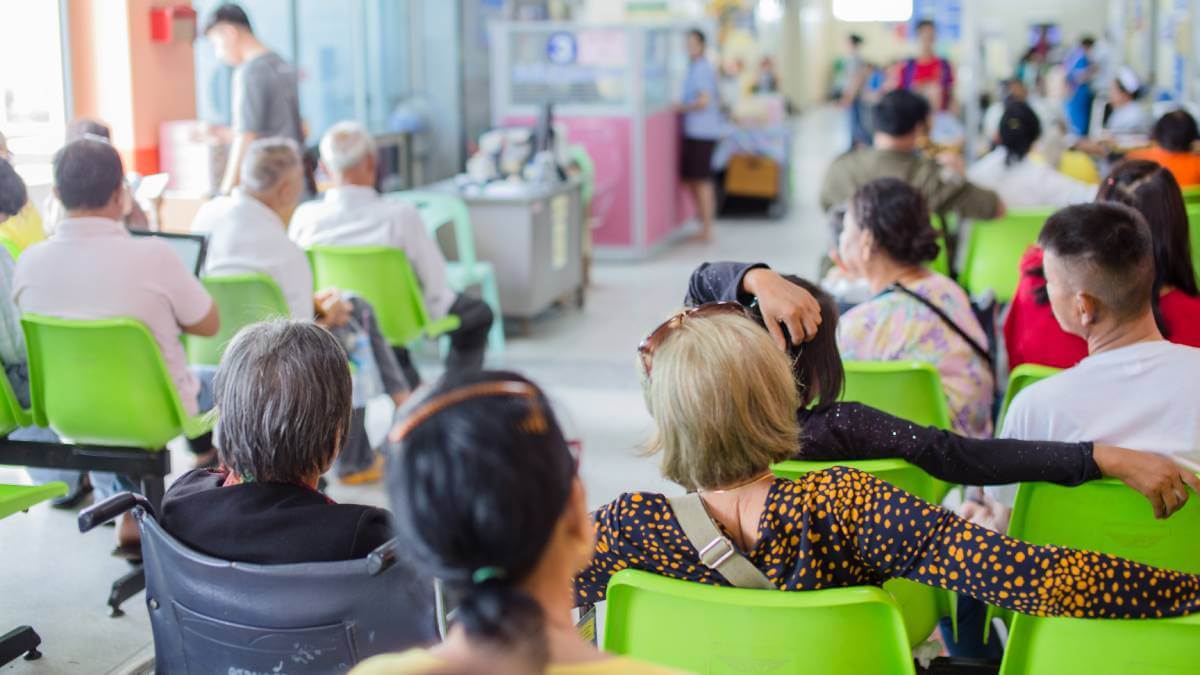While we are all scrimping and saving where we can, it seems there is one expense Australians are taking up at a record rate and that’s private health insurance.
And the huge problem of surgery wait lists may be driving the trend.
The Australian Prudential Regulation Authority has released figures showing that the number of people taking out private health insurance has increased for the past 13 quarters.
It reported that 45.2 per cent of Australians were now covered by private health insurance. The only time it was previously higher was in the June 2017 quarter, when 46 per cent of Australians held private health insurance.
Rachel David, chief executive of industry peak body Private Health Australia, told The Sydney Morning Herald that numbers began to turn around during the pandemic and the decline that preceded it had now been reversed.
“We haven’t seen this growth trajectory in an inflation environment before and it’s important for us to understand what’s going on.”
Lack of confidence in the public system
She said industry research commissioned by her organisation showed declining confidence in the public health system and demographic factors were driving the uptick.
“There is a perception that public hospitals are struggling and you might not get the best care when you need it. It [membership growth] is down to increased surgery waiting lists but also the stories about ambulance ramping and, as a result of that, poor care in emergency departments,” Dr David said.
It’s a claim backed by government figures.
In a press release this week, the Australian Institute of Health and Welfare (AIHW) said the number of patients undergoing elective (non-emergency) surgery in Australia’s public hospitals increased by 18 per cent from 2021–22 to 2022–23, but many patients were still facing long wait times.
The AIHW said elective surgery wait times were at the highest level in 20 years during 2022–23 as public hospitals worked to catch up following pandemic-related delays.
“Nationally, there were 735,500 admissions to hospital from public elective surgery waiting lists in 2022–23, up from 623,000 admissions in 2021–22, but still lower than before the COVID-19 pandemic (758,000 admissions in 2018–19),’ said AIHW spokesperson Clara Jellie.
“Public hospitals made concerted efforts during 2020–21 and 2022–23 to work through procedures earlier delayed when non-urgent surgeries were suspended. But because of these earlier delays, overall waiting times for people admitted for care have increased.”
Waiting longer than a year
If you are a little bamboozled by all those figures, what it means is that almost 10 per cent of patients were waiting longer than a year to be admitted for elective surgery, up from 2.1 per cent before the pandemic (2018-19).
The Australian Medical Association (AMA) has slammed the data.
AMA president Professor Steve Robson said a lack of capacity in hospitals had led to people waiting years for essential surgery, long waits in emergency departments and ambulance ramping.
“Public hospitals are inadequately funded and resourced. The outcome is ambulance ramping, patients spending far too long in EDs and a surgery waiting list that is nudging close to one million people,” Prof. Robson said.
“The number of people waiting more than a year for hip and knee replacement surgeries has quadrupled since 2018-19. It’s important to remember that behind each number are real people whose lives are being severely impacted by serious health conditions that require surgery,”
Prof. Robson said major reform to the National Hospital Funding Agreement was needed along with an urgent injection of funds to address immediate issues.
“The AMA continues to call for an immediate urgent injection of funds to address the current logjam and reform to the National Hospital Funding Agreement, including a 50–50 funding split between the states and territories and the federal government, and funding for performance,” he said.


Well, those that can afford private health insurance, SHOULD do so.
BUT with age pension being ones only source of income. and no super or any other money
I and doubtless many others can not afford private health insurance so am at the mercy ( or lack of it)of the mess that`s the public “system”.
thanks be to the politicians that refuse to do anything to improve on it.
OH! AND at least one way to solve this would be better funding , and more staffing –NURSES AND QUALIFIED , EXPERIENCED DOCTORS.
that includes for ALL hospitals in every state.
Politicians and your ministers its time to prove you are worth voting for -or get out.